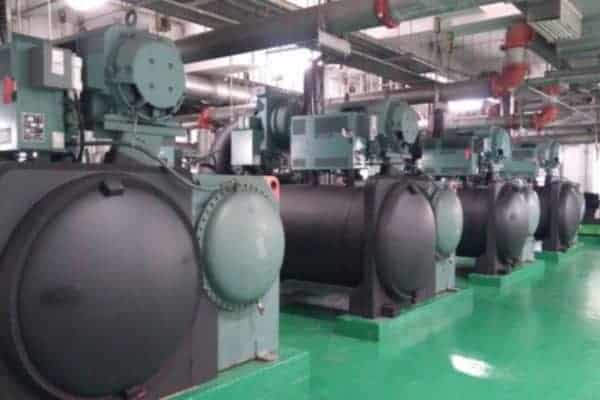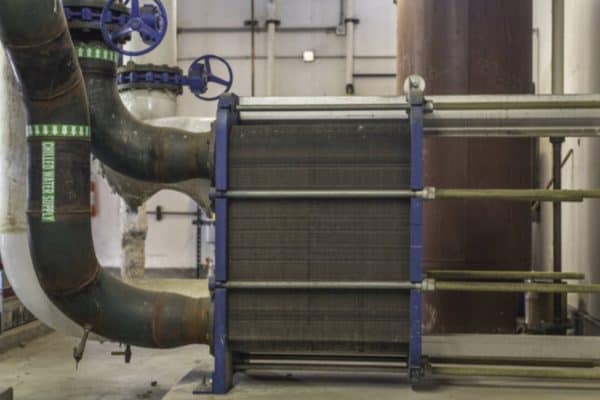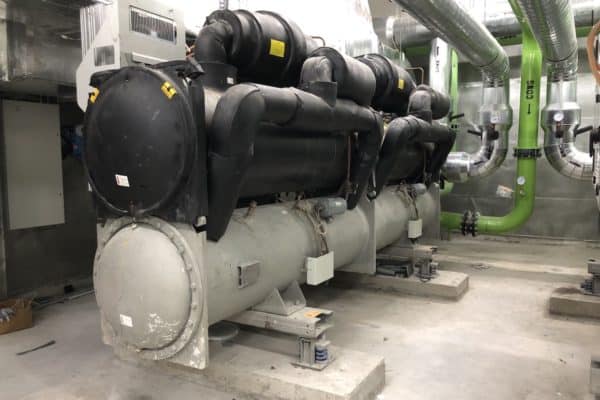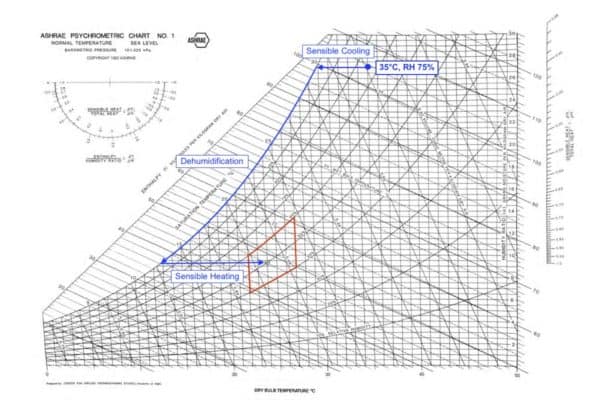What is Reverse Return Piping?
Reverse return piping setup is not uncommon in both the chilled water system and hot water system. It promised to provide a balanced hydronic system. But, I’m curious to see if it is true. So, I did some research.
Reverse return piping is a hydronic balancing method that equalizes the differential pressure across all HVAC units by rearranging the return water pipe such that the first unit that provides supply water be the last unit to receive return water thereby eliminating the need for balancing valves.
At first glance, the reverse return piping setup may look very attractive. However, many design engineers are not adopting it nowadays, especially in the chilled water system.
How Reverse Return Piping Works?
The concept of reverse return piping is simple. Just reverse the chilled water return pipe such that the first air handling unit (AHU) that receives the chilled water supply is the last AHU that provides the chilled water return.

Hence, reverse return piping is sometimes known as first in last out.
In contrast, direct return piping is the “normal way” of connecting chilled water pipes. Unlike reverse return piping, direct return piping doesn’t have a “u-turn” at the return pipe. Hence, the first AHU that receives the chilled water supply is also the first AHU that provides the chilled water return.
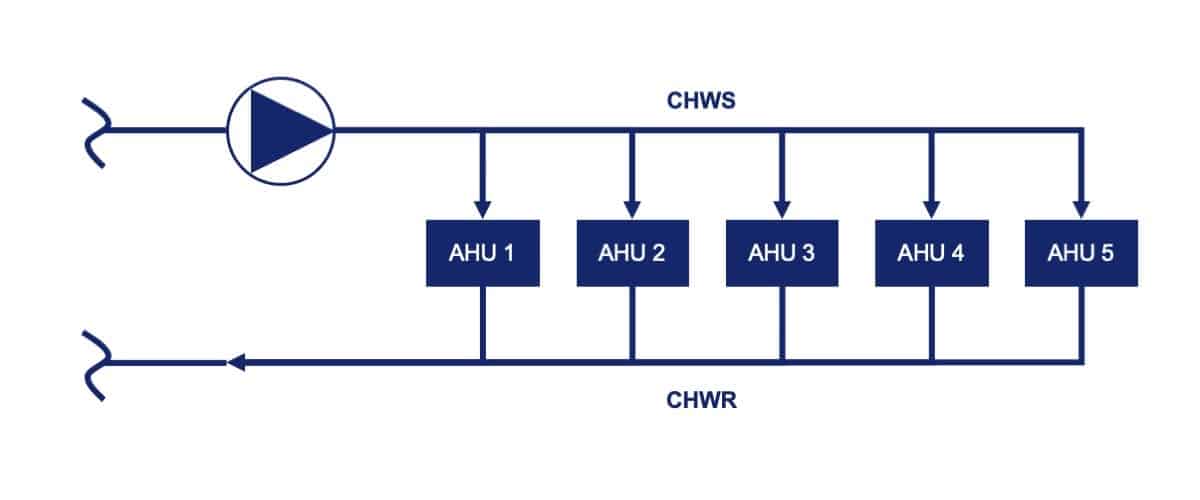
Logically, reverse return piping seems like a better setup for water balancing since all AHUs are receiving an equal amount of chilled water and thus, their load is balanced. But, it is more than that.
Why Use Reverse Return Piping?
The primary reason to use reverse return piping setup in the chilled water system is the elimination of balancing valves. However, most people would not agree with that.
Many studies had shown that reverse return piping layout is more suitable for constant chilled water flow design. But, new buildings nowadays are using variable chilled water flow which makes the use of the reverse return piping setup questionable.
Normally, balancing valves are used to create pressure drops so that different lengths of pipes are compensated in order to achieve balance and prevent underflow or overflow.
However, with reverse return piping, the additional pipe lengths installed at the return side can create sufficient pressure drop and achieve the same effect as individual balancing valves. So, the initial cost of purchasing balancing valves can be eliminated.
On a side note, if you want to quickly learn about chilled water system, you can get my Chilled Water System (eBook). If you’re into design, you can enroll in my Chilled Water System Design Course where I teach you various design procedures with tons of examples.
Chilled Water System Design Course
Learn how to design a chilled water system with AHU/FCU selection, chiller sizing, cooling tower sizing, pump sizing, piping design, ductwork design and more.
Disadvantages of Reverse Return Piping
Although reverse return piping may be attractive, there are a few critical disadvantages associated with it. Perhaps, they are the reason why many design engineers stop using the reverse return piping setup in the chilled water system.
1. Insignificant Cost Savings
The initial cost saving from not having to buy balancing valves may be superseded by the cost of the additional return pipes. Besides, having longer large diameter pipes means the energy losses are greater and hence, the operating cost is higher.
In addition, more valuable space is needed to accommodate the additional return pipes. Hence, the overall cost savings may be insignificant or worse.
2. Balancing Valves May Still Be Necessary
It is extremely difficult to ensure equal pressure drops in all segments by just relying on the reverse return piping setup, without balancing valves. Most of the time, balancing valves are still needed which makes the additional return pipes pointless.
In reality, pressure drop calculations are estimations. Pipe diameters are standardized. If a flow requires DN90 pipes, we have no choice but to use DN100 pipes which complicates the pressure drop calculation process.
Furthermore, most pipe installations deviate from the original design significantly due to installer quality, inspection quality, site conditions and other factors. Moreover, different pipe connections yield different pressure drops.
What’s more, in the future, any add-ons, modifications and upgrades will mess up the balance resulting from using reverse return piping setup unless balancing valves are installed.
Therefore, it is wise to include balancing valves even if higher authority personnel insist on using reverse return piping because they may be wrong about it. So, reverse return piping doesn’t seem like a good idea at this point.
Pressure Independent Balancing Control Valve (PIBCV)
Nowadays, new buildings fitted with the chilled water system are mostly using pressure-independent balancing control valves (PIBCVs) instead of the traditional manual balancing valves.
PIBCVs are able to balance and control the chilled water flow rate precisely regardless of the changes in pressure which further discourages the need for using the reverse return piping system.
Not to forget, the reverse return piping setup was initially developed as an alternative to balancing valves due to cost and the difficulty of manual balancing. Now, PIBCVs offer huge benefits in hydronic balancing. Hence, reverse return piping may no longer be necessary.
Reverse Return Piping in Hot Water System
New buildings are starting to use the heat pump hot water system rather than the traditional gas boiler system. In this case, the reverse return piping setup can significantly improve the performance of the hot water system.
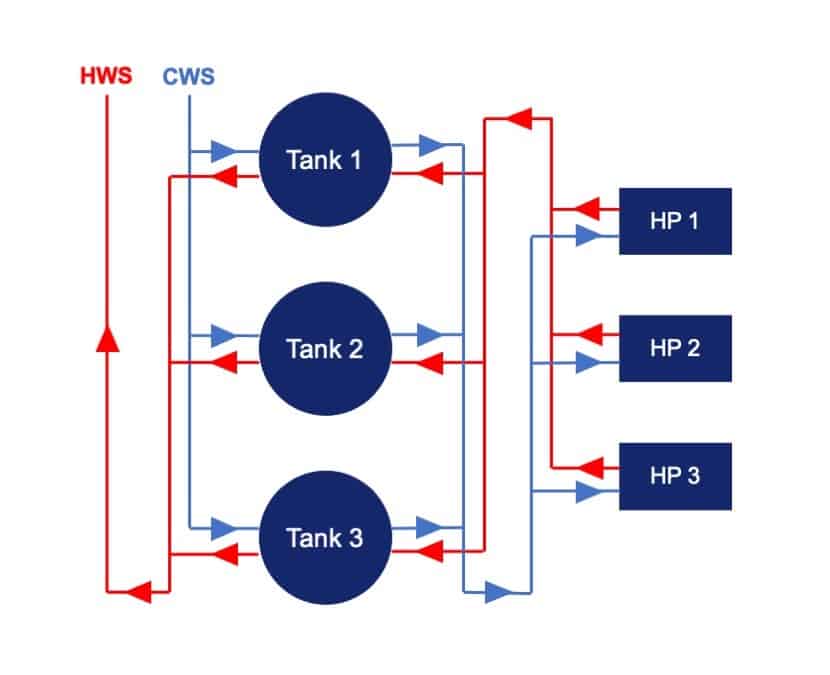
It is advisable to use reverse return piping in the hot water system with calorifier tanks. Otherwise, Tank 1 will be overloaded because it is the first one to receive cold water supply (CWS) and also the first one to provide hot water supply (HWS).
As the hot water usage carries on, the hot water stored in Tank 1 will eventually get depleted and start to supply low-temperature water instead. Obviously, guests don’t like to shower with cold water in the morning.
If reverse return piping setup was adopted as shown in the above diagram, Tank 1 will be the first to receive cold water supply (CWS) but the last to provide hot water supply (HWS). The result is all three tanks will be supplying approximately the same amount of hot water.
Hence, the hot water usage is balanced and low-temperature hot water problems can be avoided.
On the other hand, heat pumps should also use reverse return piping so that hot water replenishment is also balanced. However, it is not as critical as the supply section.
Conclusion
If you ask me, I don’t think reverse return piping setup in the chilled water system will be considered in the future given that most buildings nowadays are proceeding to use variable flow and pressure independent balancing control valves (PIBCVs).
So, purely on reverse return piping, the chilled water system may not be suitable but the hot water system can definitely find it very useful for balancing hot water usage.
Once again, you can get my Chilled Water System (eBook) to quickly learn more about chilled water system. But, if you want to learn how to design a chilled water system from start to end, I encourage you check out my Chilled Water System Design Course.
Chilled Water System Design Course
Learn how to design a chilled water system with AHU/FCU selection, chiller sizing, cooling tower sizing, pump sizing, piping design, ductwork design and more.
If you have anything to add (or ask) about this topic, leave a comment down below!




